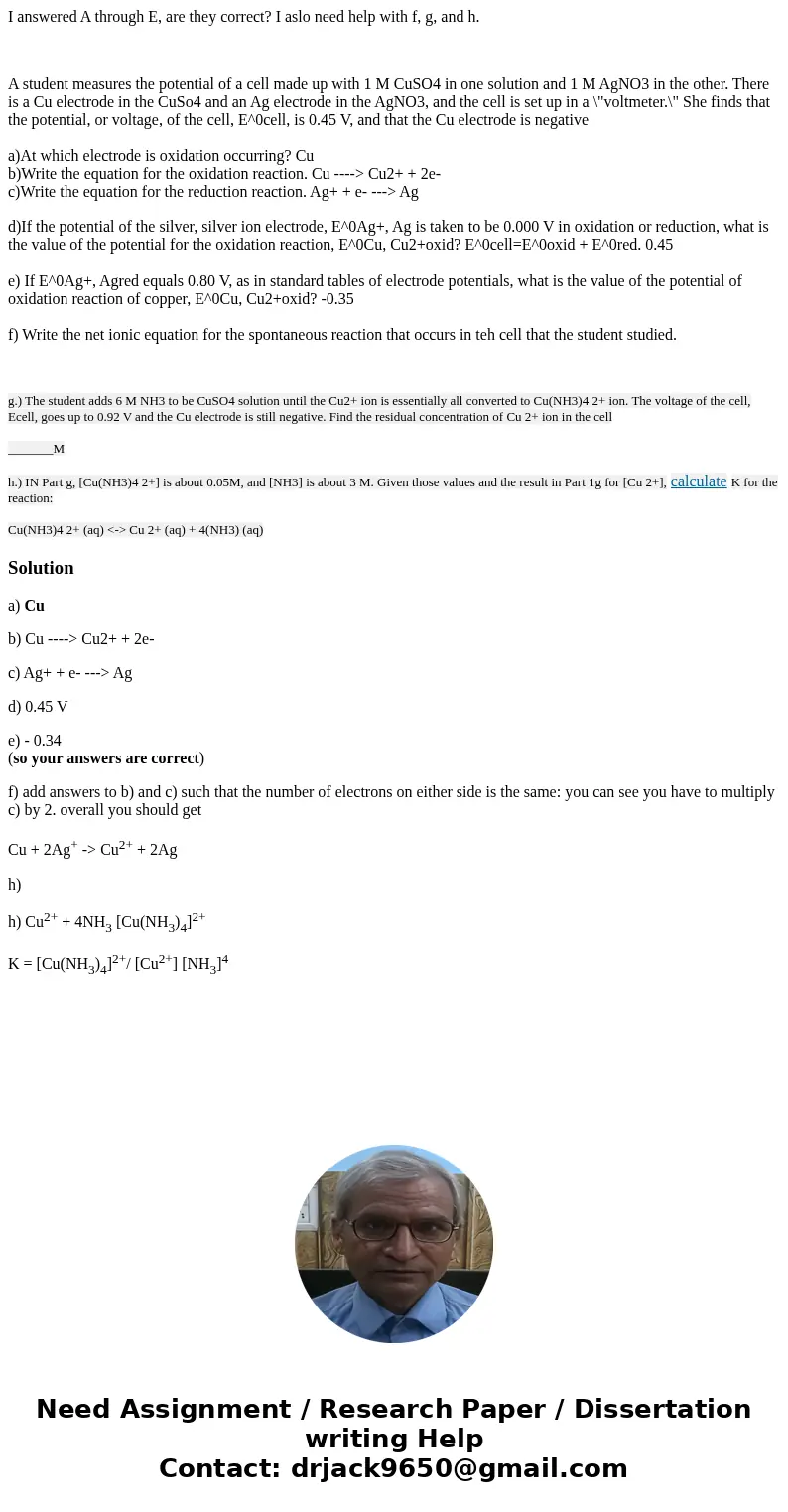I answered A through E are they correct I aslo need help wit
I answered A through E, are they correct? I aslo need help with f, g, and h.
A student measures the potential of a cell made up with 1 M CuSO4 in one solution and 1 M AgNO3 in the other. There is a Cu electrode in the CuSo4 and an Ag electrode in the AgNO3, and the cell is set up in a \"voltmeter.\" She finds that the potential, or voltage, of the cell, E^0cell, is 0.45 V, and that the Cu electrode is negative
a)At which electrode is oxidation occurring? Cu
b)Write the equation for the oxidation reaction. Cu ----> Cu2+ + 2e-
c)Write the equation for the reduction reaction. Ag+ + e- ---> Ag
d)If the potential of the silver, silver ion electrode, E^0Ag+, Ag is taken to be 0.000 V in oxidation or reduction, what is the value of the potential for the oxidation reaction, E^0Cu, Cu2+oxid? E^0cell=E^0oxid + E^0red. 0.45
e) If E^0Ag+, Agred equals 0.80 V, as in standard tables of electrode potentials, what is the value of the potential of oxidation reaction of copper, E^0Cu, Cu2+oxid? -0.35
f) Write the net ionic equation for the spontaneous reaction that occurs in teh cell that the student studied.
g.) The student adds 6 M NH3 to be CuSO4 solution until the Cu2+ ion is essentially all converted to Cu(NH3)4 2+ ion. The voltage of the cell, Ecell, goes up to 0.92 V and the Cu electrode is still negative. Find the residual concentration of Cu 2+ ion in the cell
_______M
h.) IN Part g, [Cu(NH3)4 2+] is about 0.05M, and [NH3] is about 3 M. Given those values and the result in Part 1g for [Cu 2+], calculate K for the reaction:
Cu(NH3)4 2+ (aq) <-> Cu 2+ (aq) + 4(NH3) (aq)
Solution
a) Cu
b) Cu ----> Cu2+ + 2e-
c) Ag+ + e- ---> Ag
d) 0.45 V
e) - 0.34
(so your answers are correct)
f) add answers to b) and c) such that the number of electrons on either side is the same: you can see you have to multiply c) by 2. overall you should get
Cu + 2Ag+ -> Cu2+ + 2Ag
h)
h) Cu2+ + 4NH3 [Cu(NH3)4]2+
K = [Cu(NH3)4]2+/ [Cu2+] [NH3]4

 Homework Sourse
Homework Sourse